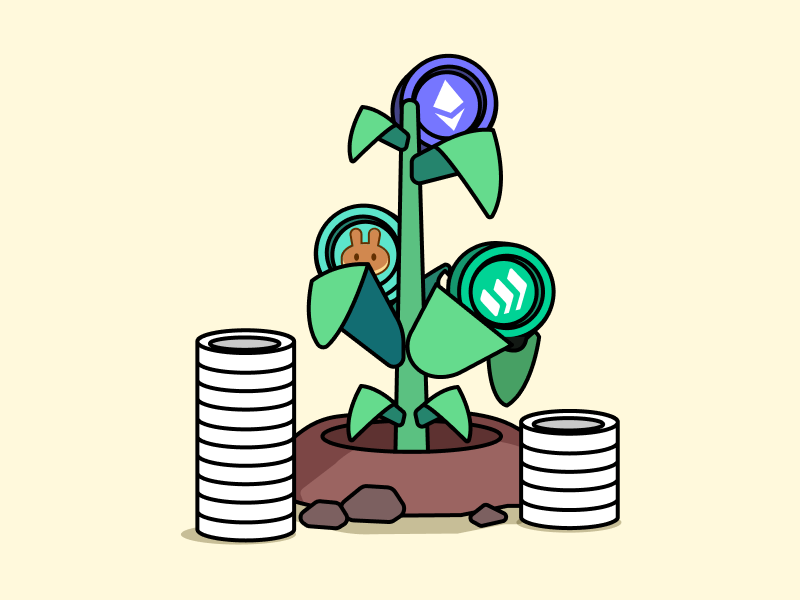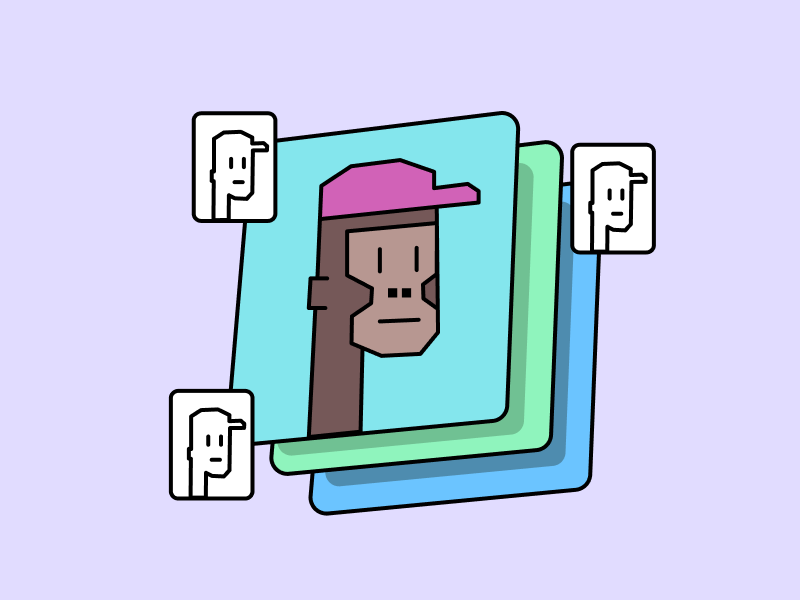Exploring Conflux (CFX) as the ‘Chinese Ethereum’
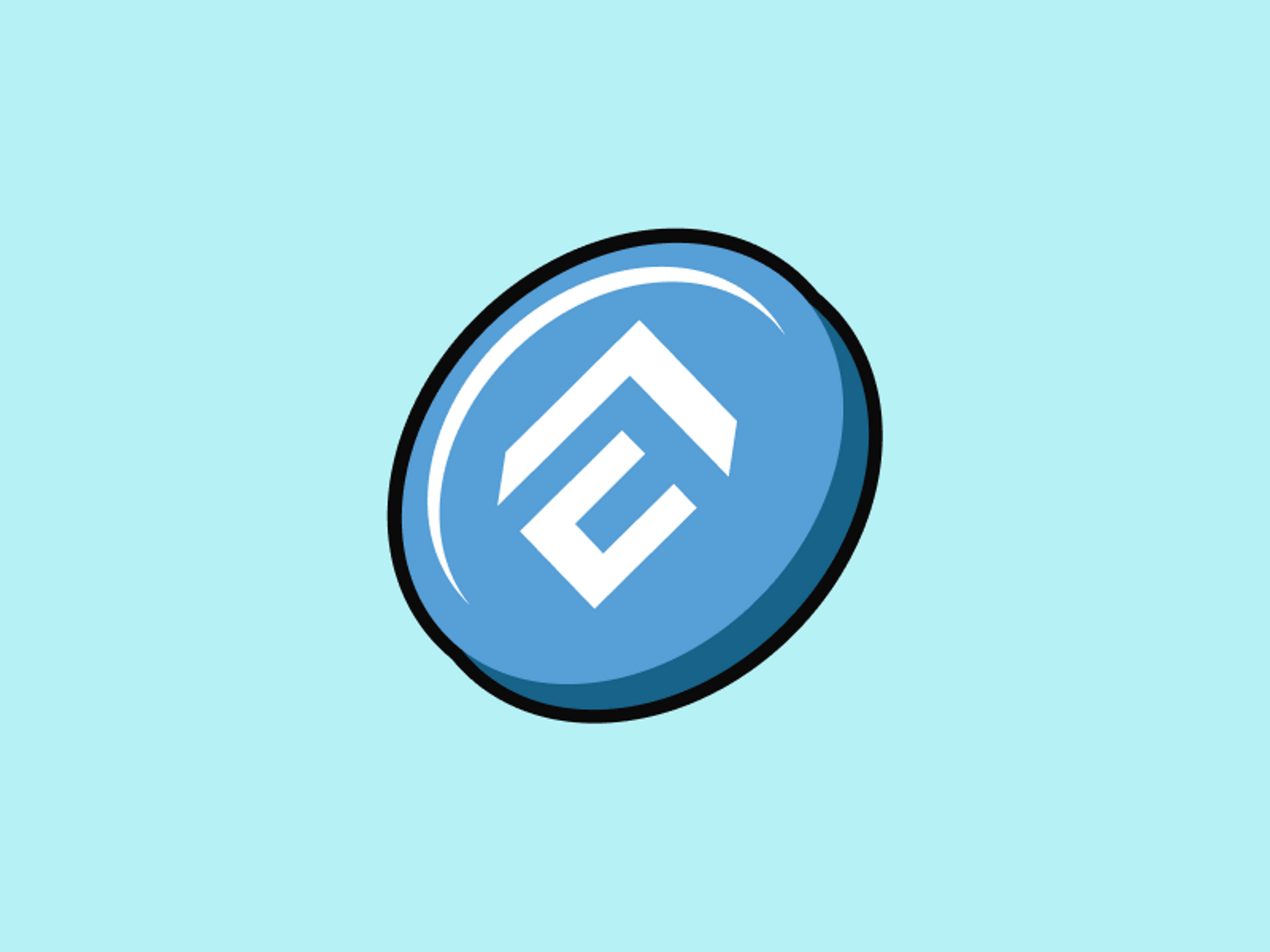
The legalization of crypto asset trading in Hong Kong in June 2023 has become a significant milestone for the crypto world and the development of blockchain networks, particularly in Asia. In this context, Conflux , a Chinese-origin coin, emerges as a high-performance crypto asset with a blockchain platform. In fact, the Shanghai government tested the Yuan stablecoin, CNHC, on the Conflux blockchain last year. Let’s read the following article to find out what Conflux (CFX) is and how it works!
Article Summary
- 🔗 Conflux Network is a layer 1 blockchain that combines proof-of-work (PoW) and proof-of-stake (PoS) consensus to build dApps.
- 🤝 Conflux combines PoW and PoS mechanisms in its consensus algorithm. PoW is used to select block leaders and generate new blocks, while PoS is used to validate transactions and ensure network security.
- 🇨🇳 Conflux, often referred to as “Chinese Ethereum,” is the only public blockchain that complies with the current regulations in China.
- 📈 Conflux’s native token, CFX, has increased in price by over 1300% since the end of January 2023. One of the reasons is Conflux’s partnership with Chinese social media, “The Little Red Book.”
What is Conflux (CFX)?
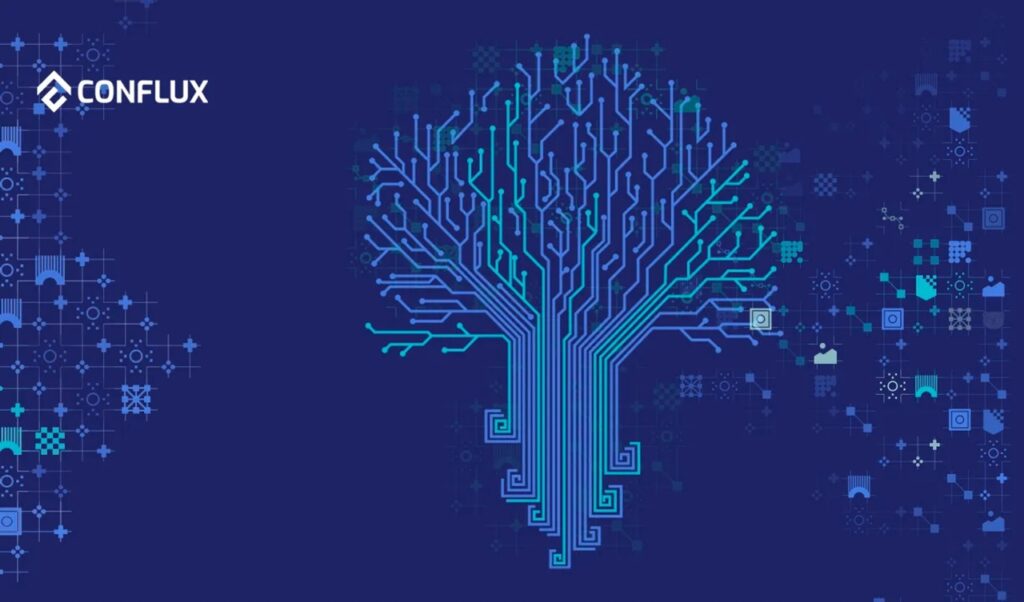
Conflux Network is a layer 1 blockchain that combines PoW and PoS consensus to build dApps. It can achieve the same level of decentralization and security as Bitcoin and Ethereum. It can also process 3,000-6,000 transactions per second (TPS).
This blockchain differs from other blockchains because it uses a unique Tree-Graph consensus algorithm. It enables parallel processing of transactions, increasing network speed and capacity.
Conflux launched its mainnet in October 2020 with a PoW consensus mechanism. Then in 2022, it performed a system upgrade called Hydra Upgrade. This upgrade transformed Conflux consensus into a hybrid of PoW and PoS consensus mechanisms and marked the start of Conflux eSpace and a PoS staking mechanism.
Also, read What is Proof-of-stake (PoS)?
CFX, Conflux’s native token, since the end of January 2023, has increased in price by more than 1300%. One of the reasons for this is Conflux’s partnership with Chinese social media, “The Little Red Book.” Conflux is the only public blockchain that complies with current regulations in China. In January 2021, the Shanghai Government invested US$5 million in Conflux and used its blockchain to test the Yuan stablecoin in September 2021.
Who Created Conflux Network (CFX)?
Conflux Network was founded in 2018 by a group of researchers and engineers from China, led by Fan Long. Fan Long, who holds a doctoral degree in computer science from MIT, played a role in designing this platform’s strategy and long-term vision.
In developing blockchain and other system infrastructure research, Fan Long founded the Tree-Graph Blockchain Research Institute. Andrew Chi-Chih Yao, China’s only Turing Award winner, is the institute’s Chief Scientist.
The team comprises some of the best computer science and cryptography experts from top universities in China and abroad. Among them are graduates or researchers from Tsinghua University, Massachusetts Institute of Technology (MIT), Carnegie Mellon University (CMU), University of Illinois at Urbana-Champaign (UIUC), Shanghai Jiao Tong University, and University of Science and Technology of China.
How Does Conflux Work?
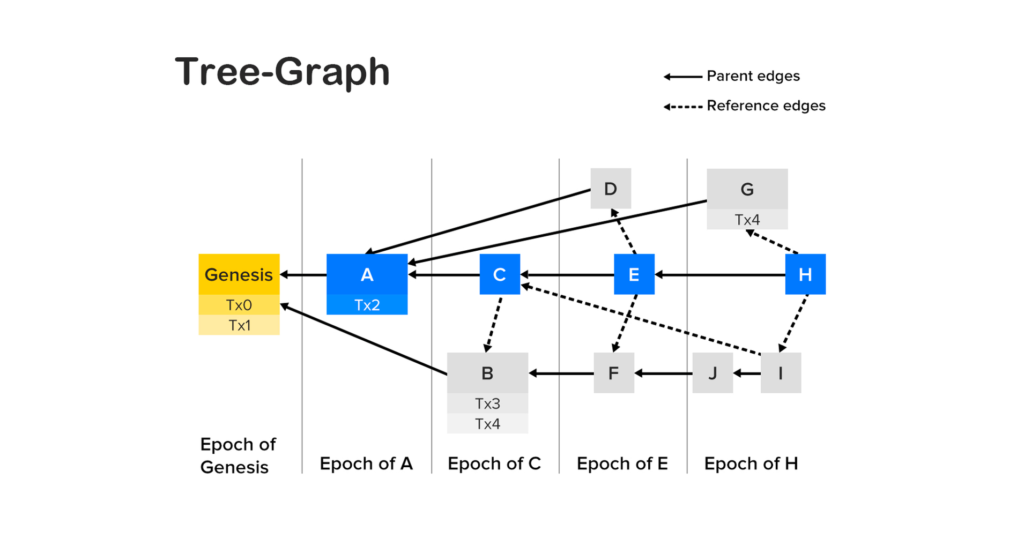
Conflux eSpace follows the same rules as the Ethereum EVM. It supports smart contracts with the Solidity programming language used in Ethereum. Supporting Solidity allows developers to build dApps on the Conflux network easily and even migrate existing dApps on Ethereum to this platform.
Greedy-Heaviest-Adaptive-SubTree (GHAST) and Tree-graph are two essential components in the Conflux structure. GHAST is a consensus algorithm to agree on the order of valid transactions. At the same time, Tree-graph is a data structure that stores and replicates transaction blocks. In Tree-graph, a ‘tree’ structure connects transaction blocks, enabling the parallel and efficient processing of related transactions.
GHAST sorts valid transactions and prioritizes the transactions with the highest weight. The transactions are then organized in a Tree-graph, utilizing graph-based data structures for processing efficiency.
Step-by-step of How Conflux Works
To understand how Conflux works, you need to understand the basic concept of blockchain. A blockchain is a distributed network comprising many computers or nodes that work together to verify, validate, and record transactions. Here are the working steps of Conflux:
- Tree-Graph Consensus Algorithm: This platform uses the GHAST consensus algorithm. In this algorithm, each node in the network acts as a transaction processor. New transactions are collected in blocks and sent to other nodes for verification.
- Partitioning and Processing Blocks in Parallel: The received blocks are divided into smaller partitions. Each node chooses a particular partition to process in parallel. Within that partition, nodes work together to verify and validate transactions.
- Block Leader Selection: Each partition has a randomly selected block leader. The block leader is responsible for creating new blocks and organizing the order of transactions within them. Block leader selection uses a Proof-of-Work (PoW) mechanism, where nodes compete to solve complex mathematical calculations.
- Transaction Validation by the Block Leader: The block leader validates the transactions in its partition, and if valid, the transactions are inserted into a new block and added to the blockchain.
- Block Deployment and Verification by Other Nodes: Once the block leader creates a new block, it is distributed to other nodes in the network. These nodes verify the new block and validate its transactions using the Tree-Graph consensus algorithm.
- Synchronization and Consensus: Once most nodes reach consensus on a valid block, it is permanently added to the blockchain. It ensures data integrity and consistency across the network.
This way, Conflux allows transactions to be processed in parallel in smaller partitions, optimizing network speed and scalability. This approach also ensures network security by combining PoW and PoS mechanisms in block leader elections.
Conflux combines Proof-of-Work (PoW) and Proof-of-Stake (PoS) mechanisms in its consensus algorithm. PoW is used to elect block leaders and generate new blocks, while PoS is used to validate transactions and ensure network security.
What Makes Conflux Different?
- Emphasis on Business Development
It has a strong focus on world-class business development. It has strategic partnerships with the Chinese government, a Chinese telecom company (China Telecom), and Instagram-like Chinese social media platform Little Redbook.
- Talented and Resilient Team
This platform has a team of talented and experienced individuals in blockchain, computer science, and other related technologies. The team profoundly understands blockchain technology and has a strong track record in development and research.
- A Growing Ecosystem
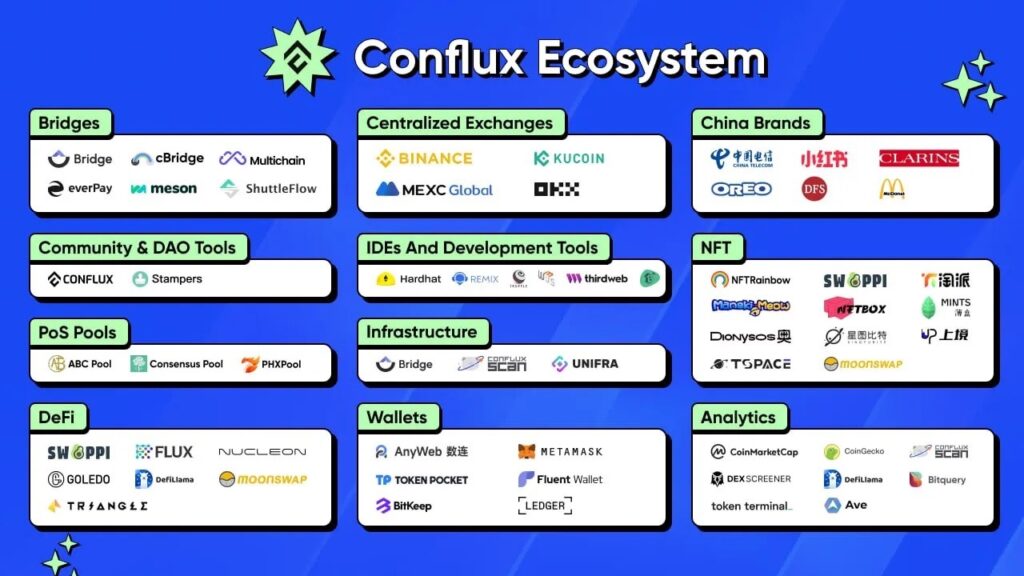
The number of users of CFX’s wallet, Fluent Wallet, continues to increase, showing the positive growth of the Conflux ecosystem. It has attracted developer interest in building CFX-based applications and services, reflecting promising adoption. The new partnership also strengthens the sustainability of the ecosystem, as seen by the increasing number of dApps built on this platform.
- Improving Tokenomics
The Conflux team has burned nearly 500 Million CFX tokens from the circulating token supply to reduce inflation. In addition, there’s also an ongoing proposal by their CTO for an additional burning mechanism.
- Great Narrative
In June 2023, Hong Kong will legalize the trading of crypto assets. It generates a strong presence of Chinese coins in Asia, CFX being one of them. In addition, it is also the test blockchain for the launch of the Yuan stablecoin, CNHC.
Conclusion
Conflux (CFX) is a blockchain platform that provides an innovative and high-performance solution for developing decentralized applications. Its support for the Solidity programming language and integration with the Ethereum ecosystem enhances developers’ versatility in creating applications that can operate on the Conflux network.
Moreover, Conflux’s strong emphasis on top-tier business development, partnerships with prominent governments and companies, and rapid expansion of its ecosystem demonstrate promising potential for driving substantial innovation and growth within the cryptocurrency market.
How to Buy Conflux (CFX) on Pintu
Currently, CFX coin cannot be traded through Pintu yet. Therefore, stay tuned to Pintu’s channels for further information regarding the listing of CFX. In the meantime, you can invest in various crypto assets such as BTC, ETH, SOL, and others safely and easily.
Pintu is also compatible with popular wallets such as Metamask to facilitate your transactions. Download Pintu app on Play Store and App Store! Your security is guaranteed because Pintu is regulated and supervised by Bappebti and Kominfo.
In addition to executing transactions in the Pintu Apps, you can also learn more about crypto through various Pintu Academy articles updated weekly! All Pintu Academy articles are made for knowledge and educational purposes, not as financial advice.
References
- Conflux Team, Conflux Document, Conflux, accessed 29 Mei 2023.
- Conflux Network, Tree-Graph Structure of Conflux — explained by Conflux CEO Dr. Fan Long, Medium, accessed 29 Mei 2023.
- Shaurya Malwa, ‘Chinese Ethereum’ Conflux Draws Spotlight as Hong Kong Welcomes Retail Traders, Coindesk, accessed 29 Mei 2023.
- Jay @0xjaypeg, CFX, Twitter, accessed 30 Mei 2023.
- Conflux Network, Summer is heating up, and so is Conflux Network! ☀️, Medium, accessed 30 Mei 2023.
Share
Related Article
See Assets in This Article

4.7%

Conflux Price (24 Hours)
Market Capitalization
-
Global Volume (24 Hours)
-
Circulating Supply
-
